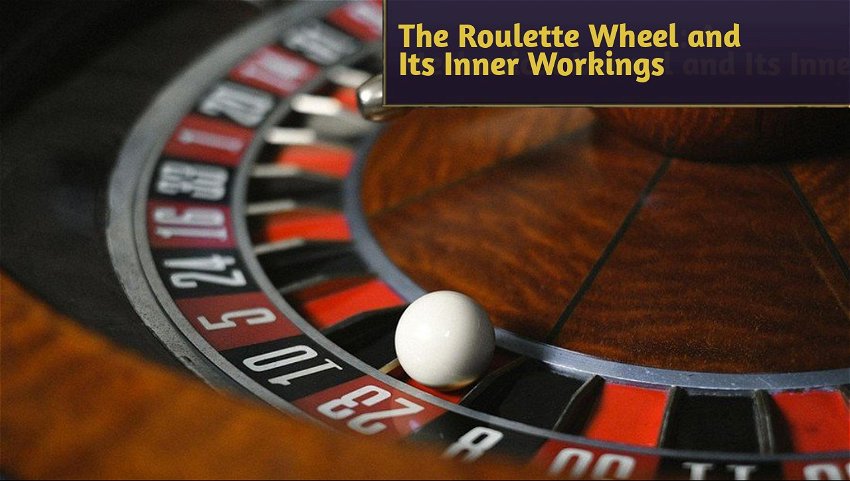The evolution of the roulette wheel is a captivating tale that transports us back to 18th-century France, where the game of roulette first made its mark on the bustling streets of Parisian casinos. Originating from the French phrase "little wheel," roulette quickly gained popularity for its blend of simplicity and excitement. The earliest versions of the roulette wheel featured pockets numbered from 1 to 36, alternately colored in red and black, with a single green pocket marked zero. Over time, the design and mechanics of the roulette wheel underwent numerous transformations, adapting to the preferences of players and technological advancements. So, let's look closer at how does Wheel of Fortune work.
Anatomy of the Roulette Wheel: Unraveling Its Components
At the heart of every roulette table lies the intricate mechanism of the roulette wheel, composed of several essential components meticulously crafted to ensure a fair and thrilling gaming experience. Let's delve into the anatomy of the roulette wheel:
1. Outer Rim: The outer rim of the wheel is adorned with numbered pockets, each representing a unique outcome in the game. In traditional European roulette, the wheel features 37 pockets numbered from 0 to 36, while American roulette wheels include an additional double zero pocket, bringing the total to 38. These pockets are strategically arranged to maintain randomness and prevent predictability in the game's outcomes.
2. Spindle: Mounted on a central spindle, the wheel rotates effortlessly, allowing the croupier to set the ball in motion, signaling the commencement of each round of play. The spindle serves as the axis around which the wheel spins, facilitating the fluid motion of the game.
3. Ball Track: The ball track, or the path along which the roulette ball travels, is carefully designed to ensure smooth and consistent movement. Made from durable materials like polished wood or metal, the ball track guides the ball as it traverses the wheel, adding an element of suspense to each spin.
4. Frets: Precision-engineered frets, or dividers between pockets, are strategically positioned to deflect the ball in unpredictable trajectories as it traverses the wheel. These frets play a crucial role in introducing randomness and excitement to the game, ensuring that each spin is governed by chance alone.
The Inner Workings of the Roulette Wheel: Precision and Balance
Beneath its captivating exterior, the roulette wheel embodies a meticulous balance of precision engineering and intricate craftsmanship. Each component of the wheel undergoes rigorous calibration to maintain optimal balance and ensure random outcomes with every spin. The distribution of weight across the wheel is meticulously calibrated, with careful attention paid to the alignment of the pockets, ball track, and spindle. Precision-engineered frets, or dividers between pockets, are strategically positioned to deflect the ball in unpredictable trajectories as it traverses the wheel, adding an element of chance and excitement to the game. Through meticulous construction and rigorous testing, every aspect of the roulette wheel is fine-tuned to uphold the integrity of the game and provide players with an exhilarating gaming experience.
Initiating the Spin: The Role of the Croupier
• Manual Spinning: In traditional casino settings, the roulette wheel is spun manually by the croupier. The croupier uses their hand to impart force to the wheel, initiating the spin and setting the ball in motion along the ball track. This manual spinning process requires skill and precision to ensure consistent and fair gameplay.
• Automated Spinning: With advancements in technology, many modern casinos utilize automated roulette wheels equipped with electronic mechanisms for spinning. These automated wheels feature built-in motors that spin the wheel at a consistent speed, eliminating the need for manual intervention by the croupier. While automated spinning offers convenience and efficiency, some players prefer the traditional charm and authenticity of manual spinning by a croupier.
• Ball Release: After initiating the wheel's spin, the croupier releases the ball onto the rotating wheel, sending it in the opposite direction. As the ball progresses along the designated track, its momentum gradually diminishes until it eventually settles within one of the numbered pockets. The result of the game hinges on the specific pocket where the ball lands, determining the outcomes for players who placed bets corresponding to the number or color of that pocket.
As players gather around the roulette table, they marvel at the intricate design and precise mechanics of the roulette wheel. Each spin offers a moment of anticipation and excitement as the ball dances along the ball track, ultimately determining the fate of players' bets. From its humble origins to its modern-day iterations, the roulette wheel remains a timeless symbol of chance and fortune, captivating players with its timeless allure and enduring appeal.
Evolving with Technology: Adapting to Changing Trends and Platforms
As technology continues to advance, the landscape of casino interfaces is constantly evolving to adapt to changing trends and platforms. From the rise of mobile gaming to the integration of virtual and augmented reality experiences, designers must stay abreast of emerging technologies and industry innovations to remain competitive in the market. This involves experimenting with new design techniques, optimizing interfaces for different devices and screen sizes, and exploring novel ways to enhance player immersion and engagement. By embracing technological advancements and staying ahead of the curve, developers ensure that casino interfaces remain at the forefront of innovation in the ever-changing world of online gambling.
Feedback and Iteration: Refining the Interface through User Input
A crucial aspect of the artistic journey of developing casino interfaces involves gathering feedback from players and iterating on the design based on user input. Designers utilize analytics tools, conduct usability testing, and solicit player feedback through surveys and focus groups to gain insights into how users interact with the interface and identify areas for improvement. This iterative approach allows developers to refine the interface over time, addressing usability issues, enhancing visual elements, and incorporating new features based on player preferences and behavior. By listening to the voice of the player and continuously iterating on the design, developers ensure that casino interfaces evolve to meet the changing needs and expectations of their audience.
The development of casino interfaces is a multifaceted artistic journey that encompasses visual design, user experience, technological innovation, and player feedback. Designers must balance the aesthetic elements of design with the practical considerations of usability and functionality to create interfaces that captivate players and provide a seamless gaming experience. By staying attuned to emerging trends, embracing technological advancements, and iterating on the design based on user input, developers ensure that casino interfaces remain engaging, intuitive, and immersive in the dynamic world of online gambling.










— Comments 0
, Reactions 1
Be the first to comment